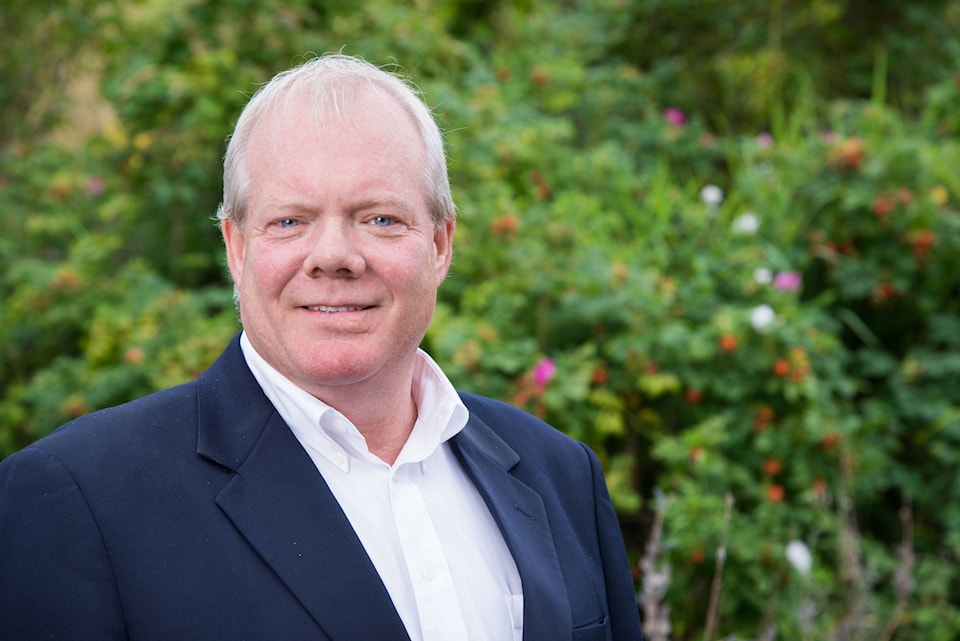SURREY — Surrey adopted a Biodiversity Conservation Strategy during Monday night's council meeting, an initiative aimed at preserving green infrastructure and ecosystems in the city.
The strategy, a key component in the Green Surrey program, provides a mapping inventory of environmental features, ecological assets, vegetation types, as well as a determination of specific habitat criteria including the location and characteristics of corridors, sites and hubs to maintain biodiversity.
The BCS identifies approximately 10,200 acres of land to be preserved in its natural state within the city's Green Infrastructure Network (GIN) to maintain the city's biodiversity.
Coun. Bruce Hayne, chair of the city's environmental advisory committee, noted the lands to be preserved are to be left completely natural.
"This doesn't include sports fields and walking parks and things like that - this is 10,000 acres of absolutely natural habitat."
About 70 per cent of the lands identified are under public control, leaving approximately 3,100 acres needing to be conserved.
The BCS calls for the creation of two new processes to bring the remaining areas within the GIN.
First, Sensitive Ecosystem development permit areas (DPA) and guidelines are recommended for riparian areas and lands identified within and adjacent to the GIN. The DPAs will require landowners seeking to develop within the city to do so in a sustainable manner that protects and enhances biodiversity.
And second, the city plans to introduce a Riparian Area Bylaw that would protect fish, forests and wildlife passage. This bylaw would effectively manage riparian areas for tree hazard, storm water control and other key civic functions.
It's expected the DPA guidelines and terms of reference for a Riparian Area Bylaw will come forward to council this fall.
With the city managing or owning roughly 7,000 of the acres already, Hayne said another 2,000 will be acquired naturally over time through the development process through things like land dedications.
The remaining 1,100 acres, the city will have to purchase, Hayne said. "And at about $1 million an acre... the city is looking at about $1.1 billion to do this, so it's not an insignificant project."
He said the city is looking at a variety of options on how to pay for the lands, including using annual dividends the Surrey City Development Corporation pays to the city, looking at environmental levies for developers in sensitive areas such as Grandview and even setting up a not-forprofit fund that residents could contribute to.
But Hayne says the city doesn't have to look at purchasing the lands right away.
"We are not going to have to acquire those lands until there is development pressure on that land," he noted.
With the city's Build Surrey program nearing its end - which has expanded and created infrastructure in the city such as pools, recreation centres and the new city hall - Hayne said it's "now time to focus our efforts on building our inventory of natural environment. "We need to have biodiversity in the city, and we're densifying, we're increasing our population but as we do that, we have to do it in a thoughtful way so we balance the growth with maintaining some of the natural beauty. That's a big part of why people want to locate here," Hayne stressed.
"It's not good enough to protect, for instance, just a couple of acres of forest in one area and completely surround it with development," he said. To protect natural habitats, wildlife needs corridors and hubs to be able to move around the city.
Hayne said the entire city has been mapped out to identify where all the corridors are.
"It's not good enough to protect the eagles' bedroom, i.e. their nest, you have to protect their kitchen and dining room, too," he said, noting that's an analogy commonly told by Deb Jack, president of Surrey Environmental Partners.
Jack was on the BCS working group and said though it's taken a long time to get to this point, she's happy with the work the city's done.
"Ten-thousand acres is a whole lot more than Surrey has right now," she said.
"I'm not going to say it's perfect. It's what is able to be seen to be done right now, given where we are," Jack noted, adding there are many areas in the city that are already built out, and have minimal vegetation.
"That's why I get up and I speak to council about new developments and what we're losing - and if there's ways to save more."
Jack frequently appears before council to plead the case for tree retention. She is an unrelenting advocate for the importance of biodiversity.
"All of the living things on the earth are interconnected," Jack said. "We require a healthy, natural living environment for us as a species to do well. So in order for the future to do well in Surrey, we need to ensure that biodiversity does well. And for that you need land and all of the services that biodiversity provides us."
She said the BCS is about doing the best with what the city's got. And when the strategy is implemented, she thinks the city is going to be OK.
"And what a legacy for the history books - for the books to be able to say that in 2014 the City of Surrey made this decision that's going to benefit all of them, their children, their grandchildren and whoever else may choose to come here. This will last forever. Buildings don't last forever, pipes don't last forever, nothing we make will last forever, but this will."
Hayne, too, hopes the strategy will impact the future of the city for the better.
"Surrey, 25, 30 years from now is going to have some significant natural greenspace - and not just be a strip mall," he said.
